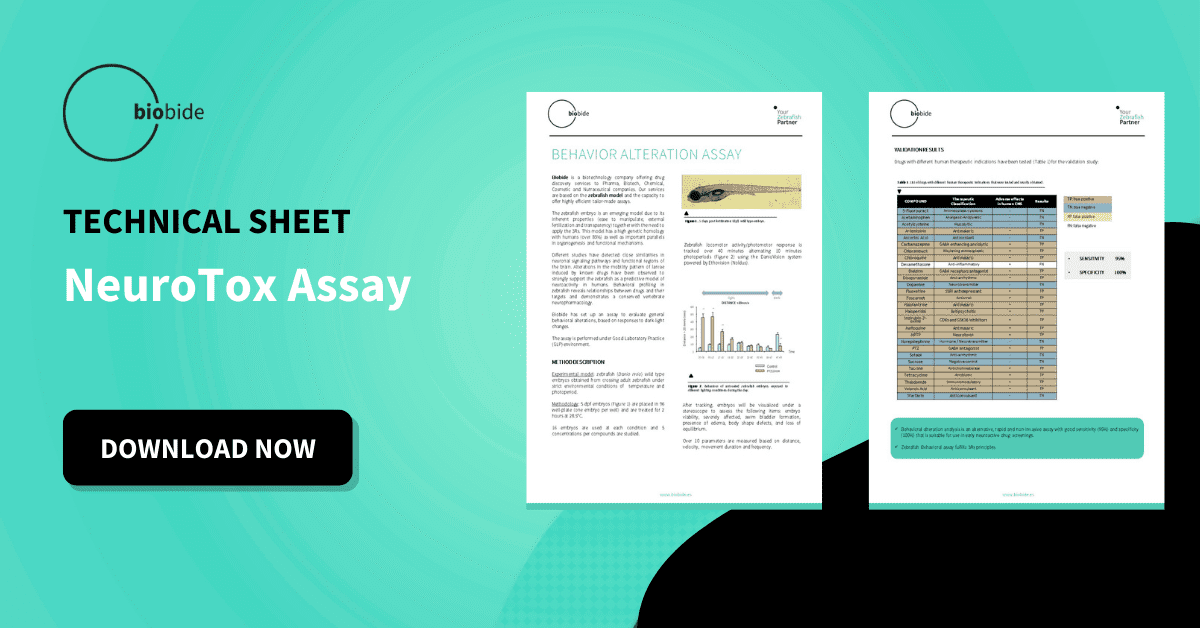The appeal of vaping and modern tobacco products among today's youth has attracted a lot of attention and poses a threat to Society’s health.
As these products gain popularity, concerns about their potential impact on health and influence on behavioral alterations in young individuals have grown. Rigorous toxicity testing is therefore a vital tool in safeguarding the well-being of anyone who uses vapes and other modern tobacco products.
Nowadays, testing on animals entails significant costs, time consumption, and ethical concerns. Therefore, the use of New Alternative Models (NAMs) has spread, and many efforts are currently being made to make them more reliable, and cost-effective. Among them, the zebrafish model is outlined as one of the most reliable ones, due to the many benefits it presents.
The rise in the popularity of vaping and modern tobacco products
As smoking regular tobacco and cigarettes have steadily declined over the years, the popularity of products such as vapes, e-cigarettes, and heated tobacco products is increasing. According to published estimations, the e-cigarette market alone will continue to grow and be worth $28-40 billion by 2027.
A concerning trend has emerged, showcasing the widespread incidence of vaping among young people due to social and peer pressure. These minors believe that utilizing this smoking method is a lot safer than regular tobacco products and that it does not entail any harmful repercussions health-wise. Thus, a report shows that 85% of US middle and high school pupils had used an e-cigarette in 2021. This trend is propelled by a mix of factors, including aggressive marketing tactics, appealing flavors, and the misperception of reduced harm. In addition, another influential factor is that modern tobacco maintains the peer pressure of the traditional, as vaping can be seen to be a ‘cool’ activity among underage people.
As modern tobacco products captivate the interest of youth, the current regulations come into question as there is no standard global approach. According to the World Health Organization (WHO), e-cigarettes are banned in over 30 countries, but many others sell them as approved consumer products.

Preclinical studies on health, nicotine addiction, and cognitive impact
Preclinical studies are one of the most relevant ways of obtaining information meant for deciphering the multifaceted effects of vaping and modern tobacco products on our health. Among them is the addictive nature of nicotine found in these products, which exerts a significant influence on adolescent brain development that could affect social and academic performance. Nicotine addiction makes it very difficult to stop the intake of tobacco product use due to the dopamine released in the brain.
Zebrafish is an important NAM used in preclinical studies. Findings from these toxicity studies in zebrafish offer insights into the negative effect of e-cigarettes on the cardiovascular and respiratory systems as well as brain development.
- Respiratory health: Researchers have exposed zebrafish embryos and larvae to the substances found in vape liquids, to assess respiratory function, inflammation, and other related effects. Of note is the decreased survival rate obtained on zebrafish, which demonstrates the damaging effects of the chemicals in modern tobacco products.
- Cardiovascular effects: Studies using zebrafish have analyzed the impact of vaping on heart development, blood vessel formation, and the overall cardiovascular function in zebrafish. The results have shown a prevalence of defects that can severely affect the function of the heart.
- Neurobehavioral outcomes: Zebrafish behavior can be altered by exposure to various chemicals, including those found in vaping products. Researchers have used zebrafish to study the effects of vaping on neurobehavioral outcomes such as anxiety, learning, and memory. These studies show that modern tobacco products can also cause a reduction in sensory perception and produce hyperactivity.
Yet, the understanding of the harmful effects of e-cigarettes and vapes is not complete and more studies are required. Therefore, the use of appropriate New Alternative Models (NAMs) is of great interest to obtain faster, more reliable, and cost-effective results, in experimental models that fulfill high ethical standards in alignment with the 3Rs Principle (Replacement, Reduction, and Refinement).
The zebrafish model for toxicity studies
Within the realm of NAMs, the zebrafish has emerged especially as a fast-developing and promising alternative for toxicity studies. This aquatic organism's unique biological characteristics provide an advantageous screening model for assessing the harmful effects of modern tobacco products. The zebrafish's sensitivity to toxic substances and its developmental parallels to humans highlight its relevance in this form of testing. Besides, it presents high genetic similarity with humans, presenting a homology of around 70-75%, many physiological processes being comparable; this generates similar biological responses to humans.
The benefits of the zebrafish extend beyond its similarity to the human genome, including transparency in the larval stage allowing direct visualization of internal organs and tissues, fast reproduction rate, small size, and being a cost-effective model. In addition, they encompass a commitment to ethical research practices and the responsible pursuit of scientific progress.
For this purpose, several toxicity and safety assays can be done in zebrafish embryos and larvae. Starting from acute toxicity and teratogenicity assays, to cardiotoxicity, angiogenesis affection, inflammation, neurotoxicity, and other behaviour alteration assays (even affection in learning and memory). At Biobide all those assays have been set up and validated for assessing the safety of this kind of innovative products.
Conclusion
The repercussions of modern tobacco consumption among the population, especially young people, resonate far beyond the individual, casting a shadow over their mental health and well-being. Several studies demonstrate the detrimental effects that e-cigarettes and vapes have on the person’s health, especially in the respiratory, cardiovascular, and nervous systems. Also, as they usually still have nicotine present, addictive effects that distress mental health remain.
Nevertheless, further investigations are needed to understand the risks and harmful effects of these smoking devices. Preclinical studies serve as a way of understanding their toxic still unknown effects, providing a path toward evidence-based policy implications and interventions. In this sense, NAMs are helping in depicting the toxic effects of these devices in a faster, more reliable, and cost-effective manner and safeguarding the ethical use of animals for research purposes, in line with the 3Rs Principle. Thus, the zebrafish model is one of the most promising NAMs due to the many benefits it presents as a reliable and accurate model to predict their toxic effects.
The urgency of curbing youth tobacco use calls for a comprehensive approach, one that amalgamates scientific research, public health interventions and initiatives, together with strict regulatory measures.
Collaboration remains paramount in this mission and requires an alliance between researchers, policymakers, and health organizations. All together, these bodies can navigate the implications of the use of vapes and modern tobacco products on adolescents and safeguard their future.
Through meticulous collaboration, and a commitment to innovation, we can forge a future that minimizes the impact of these products on the well-being of today's youth and highlights the dangers of their risk-taking behavior.
Sources
- https://tobaccocontrol.bmj.com/content/31/2/129
- https://www.who.int/news-room/questions-and-answers/item/tobacco-e-cigarettes
- https://academic.oup.com/cardiovascres/advance-article/doi/10.1093/cvr/cvad113/7233755
- https://newsroom.heart.org/news/current-evidence-identifies-health-risks-of-e-cigarette-use-long-term-research-needed#:~:text=AHA%20news%20release%3A%20Use%20of,as%20young%20adults%20(October%202022)
- https://www.webmd.com/lung/news/20230426/vaping-research--shows-damage-and-addiction
- https://pubmed.ncbi.nlm.nih.gov/34673467/
- https://www.ncbi.nlm.nih.gov/pmc/articles/PMC9018621/
- https://www.researchgate.net/publication/337133917_Assessing_the_hazard_of_E-Cigarette_flavor_mixtures_using_zebrafish
- https://www.ncbi.nlm.nih.gov/pmc/articles/PMC7532713/





